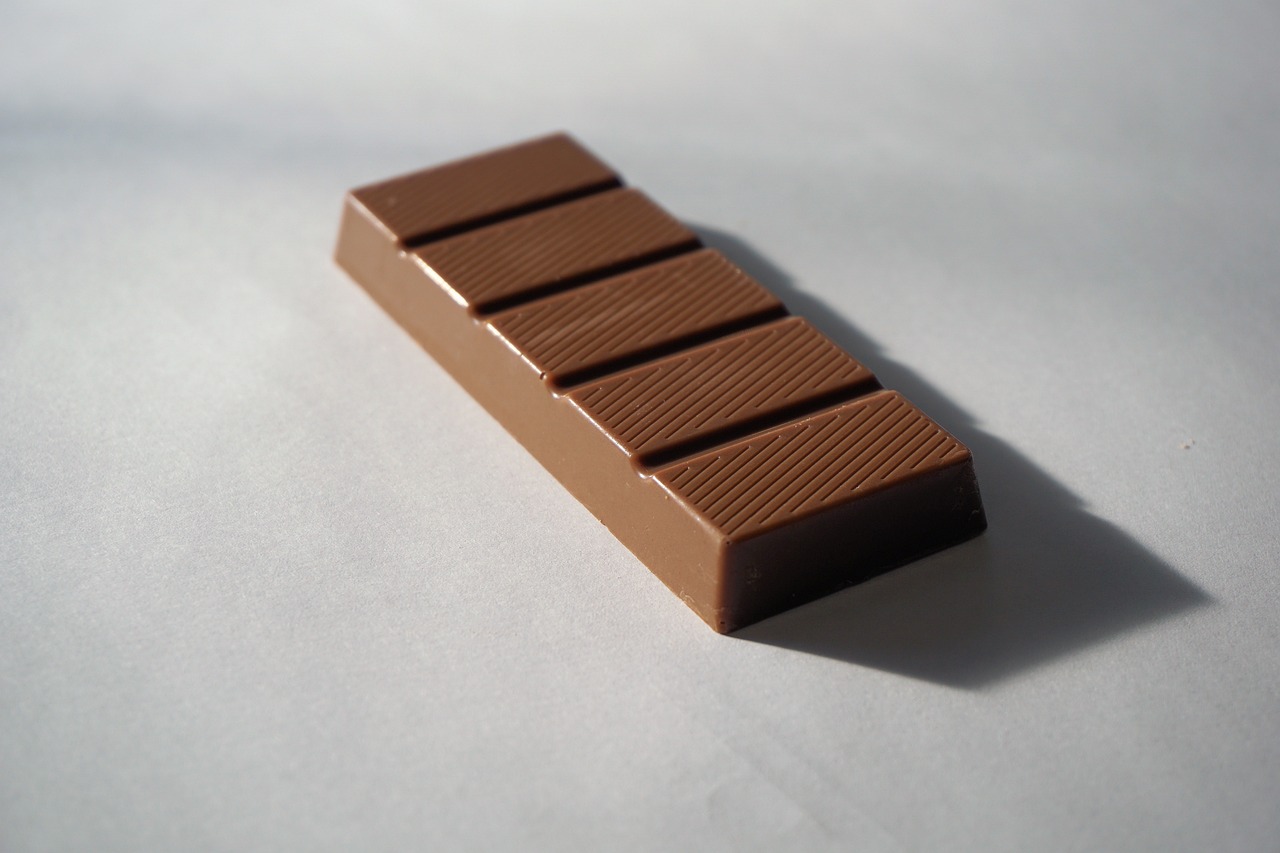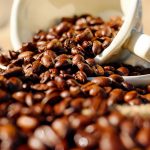When indulging in the rich, velvety layers of dark chocolate, one is not only embraced by its intense flavor but also enlivened by a subtle buzz of energy. This beloved confection, which transcends cultures and generations, holds a secret ingredient that contributes to its unique allure: caffeine. The presence of caffeine in dark chocolate is a fascinating intersection of culinary art and science, one that weaves together the history of chocolate with modern dietary inquiries. As consumers grow increasingly mindful of what they consume, understanding the caffeine content in dark chocolate becomes essential, not just for those sensitive to caffeine, but for anyone interested in balancing indulgence with health.
Our journey into the heart of dark chocolate reveals more than just its caffeine content; it unravels the nuanced layers of production, from the type of cacao beans used to the percentage of cocoa solids. Each step in the process influences not only the taste but also the amount of caffeine in the final product. This article aims to demystify the caffeine content in dark chocolate, providing a comprehensive guide that blends scientific research, nutritional expertise, and a passion for chocolate. Whether you’re a chocolate aficionado seeking to deepen your knowledge, or someone curious about the effects of your late-night treat, we invite you to explore the intricate dance between the bitter and the sweet, the energizing and the comforting aspects of dark chocolate.
With a careful balance of expertise and accessibility, this exploration is designed to not only inform but also to captivate, ensuring that your next bite of dark chocolate is accompanied by a newfound appreciation for its complexity. So, does dark chocolate really contain caffeine? Let’s unwrap the mystery together and discover what lies beneath the surface of this luxurious treat.
Caffeine Content in Chocolate Varieties
All chocolate contains caffeine because it is derived from cacao beans. But processing affects how much caffeine remains in the final product. Chocolate production involves fermenting, drying, and roasting cacao beans. The roasting process reduces some of the caffeine. Generally, the higher the percentage of cocoa solids, the more caffeine the chocolate will contain.
- Dark chocolate does contain caffeine. The amount of caffeine in dark chocolate varies depending on the cocoa content and processing methods. In general, the higher the cocoa percentage, the more caffeine it contains. A 1-ounce serving of dark chocolate with 70-85% cocoa content can have around 20-60 milligrams of caffeine.
- Milk chocolate has a lower cocoa percentage around 30-50%. It contains less caffeine than dark varieties.
- White chocolate contains no cocoa solids, only cocoa butter. So white chocolate has zero caffeine.
Dark Chocolate and Caffeine
Dark chocolate does contain caffeine. The amount of caffeine in dark chocolate varies depending on the cocoa content and processing methods. In general, the higher the cocoa percentage, the more caffeine it contains. A 1-ounce serving of dark chocolate with 70-85% cocoa content can have around 20-60 milligrams of caffeine.
- Brewed coffee (95-200 mg)
- Black tea (25-48 mg)
- Milk chocolate (5-10 mg)
For most people, the modest amount of caffeine in dark chocolate is harmless. But those sensitive to stimulants may want to limit intake, especially later in the day. While a cup of coffee keeps some people awake, the small dose of caffeine in chocolate is less likely to cause sleep issues.
Despite its caffeine content, studies show dark chocolate has multiple health benefits:
- Rich in antioxidants
- May improve heart health
- Linked to lower risk of diabetes
- Associated with enhanced brain function
Milk Chocolate’s Caffeine Profile
Milk chocolate has substantially less caffeine than dark varieties. A typical 1.5 ounce milk chocolate bar contains 5-10 mg of caffeine. This minimal amount of caffeine is unlikely to cause side effects. But the high sugar and fat content negate some of the potential health benefits. So dark chocolate is a better choice for getting antioxidants and other positive impacts from cocoa compounds.
White Chocolate and Absence of Caffeine
What about white chocolate – does it have caffeine? Despite its name, white chocolate does not technically qualify as true chocolate. It is made from cocoa butter, sugar, and milk, but without any cocoa solids. The lack of cocoa powder means white chocolate contains no caffeine.
Caffeine Variation by Cacao Origin
Where cacao beans are grown can impact their caffeine levels. Cacao trees natively grow in warm, tropical areas around the world. Studies have found cacao from different origins varies in caffeine content:
- Africa – up to 2.7 mg/g
- Asia – up to 1.37 mg/g
- South America – up to 1.26 mg/g
So chocolate made from African cacao tends to be higher in caffeine. Specific growing conditions like soil, climate, and processing methods also influence caffeine amounts.
Chocolate Caffeine vs. Other Caffeine Sources

To put chocolate’s caffeine content into context, let’s compare it to other caffeinated foods and beverages:
| Food/Drink | Serving Size | Caffeine Content |
| Brewed coffee | 8 oz cup | 95-200 mg |
| Black tea | 8 oz cup | 25-48 mg |
| Energy drink | 8 oz can | 70-100 mg |
| Dark chocolate | 1.5 oz bar | 20-35 mg |
| Milk chocolate | 1.5 oz bar | 5-10 mg |
| Hot chocolate | 8 oz cup | 5-15 mg |
Chocolate contains modest amounts of caffeine compared to coffee, tea, and energy drinks. But it provides some caffeine boost and additional benefits from cocoa compounds.
Health Implications of Caffeine Consumption
Consuming up to 400 mg of caffeine per day is considered safe for most healthy adults. Potential concerns above this level can include:
- Jitters, sweating, and rapid heartbeat
- Anxiety, irritability, and nervousness
- Insomnia and sleep disturbances
- Withdrawal symptoms like headaches and fatigue
Caffeine also interacts with some medications and worsens certain medical conditions. On the plus side, research shows moderate caffeine intake can:
- Increase alertness, focus, reaction times
- Provide antioxidant and anti-inflammatory effects
- Support heart, liver, brain, and metabolic health
- Enhance athletic and cognitive performance
So for healthy people, a little caffeine from chocolate is fine. But moderation is key, especially for those sensitive to its effects.
Theobromine and Its Distinct Effects from Caffeine
In addition to caffeine, chocolate contains a related compound called theobromine. Theobromine levels are higher than caffeine in cacao beans – around 2-3% versus 0.15-0.2%. Theobromine stimulates the heart and muscles less than caffeine, but has a longer-lasting effect. It provides mood elevation without much energy boost. Other impacts include:
- Diuretic effects causing increased urination
- Improved blood flow and nutrient absorption
- Muscle relaxation and lowered blood pressure
- Possible cough suppression and cancer prevention
When combined, caffeine and theobromine create the unique stimulating but relaxing effect of chocolate. Theobromine extends and complements caffeine’s stimulation with its drawn-out influence. This dynamic combo contributes to chocolate’s craveable properties.
Consumer Guidance
Who can safely consume chocolate and how much? Here are some tips:
- Children can have around 1-2 small squares of chocolate per day. Limit caffeine sources for young kids.
- Teens can handle 10-25 mg caffeine from chocolate daily, or 1-1.5 oz.
- Adults can enjoy 30-40 mg/day (1.5-2 oz dark chocolate).
- Pregnant women should cap caffeine, including chocolate’s, at 200 mg/day max.
- Seniors may want to limit chocolate caffeine to 25-50 mg/day (1-2 oz).
- For those sensitive to caffeine, avoid chocolate after lunchtime and when consuming other energizing foods/drinks.
Consuming chocolate in moderation with awareness of its caffeine content is recommended. Make sure to balance with adequate sleep, hydration, nutrition, and exercise.
Psychological and Mood Effects of Caffeine in Chocolate
Aside from chocolate’s physiological effects, caffeine also has psychological impacts. Small doses of caffeine from chocolate can improve:
- Alertness, reaction times, and concentration
- Energy, focus, and cognitive function
- Positive mood and sense of wellbeing
- Motivation and self-esteem
Caffeine combined with theobromine provides a short-term mood lift. Chocolate also increases production of feel-good neurotransmitters like serotonin and dopamine. But the psychological benefits do not last long. Frequent chocolate intake can lead to mood crashes later. So enjoy chocolate’s mood elevation in moderation as an occasional treat.
Sustainability and Ethical Considerations in Cacao Cultivation
The caffeine content of chocolate depends on cacao growing conditions. Sustainably and ethically cultivated cacao aims to ensure:
- Biodiversity conservation and fair labor practices
- Quality cacao production without expanding farmland
- Fair prices and safe working conditions for cacao farmers
- No child labor practices or exploitation
Seeking out chocolate made from third-party certified sustainable cacao can lead to positive community and environmental impacts. It also results in high-quality cacao beans which may affect caffeine levels.
Historical Context and Cultural Consumption of Chocolate
Chocolate originated among the Aztec, Maya, and Mesoamerican civilizations who revered cacao trees. They consumed chocolate beverages for social and ceremonial occasions. Chocolate became popular in Europe after being brought back from the Americas in the 16th century. Adding milk and sugar helped mask chocolate’s natural bitterness. The industrial production of chocolate began in the 1800s. Through innovative techniques and creative confections, chocolate shifted from an elite indulgence to a widely available treat. Today, yearly chocolate consumption averages around 9 pounds per person in the United States. Both the historical and modern fascination with chocolate is aided by mood-enhancing compounds like caffeine.
Conclusion
While chocolate does naturally contain small amounts of caffeine, the levels are modest compared to coffee or energy drinks. Of the various chocolate types, dark chocolate has the most significant caffeine content. Consuming moderate chocolate amounts with mindfulness of caffeine’s effects can allow enjoying the sweet treat while avoiding overstimulation. Balancing chocolate’s caffeine with plenty of activity, water, nutrition, rest, and wellbeing practices keeps its consumption in perspective. So go ahead – satisfy your chocolate cravings in moderation and savor each velvety caffeinated bite.
Susan Muskat is a professional chef with over 25 years of experience in the culinary industry. After working in some of the most prestigious restaurants in the world, she opened her own restaurant, Moose and Sadie’s, which quickly became a local favorite. Susan is also the author of a blog all about recipes, guidelines, cooking tips, and knowledge from professional chefs. She loves nothing more than sharing her passion for food with others.








